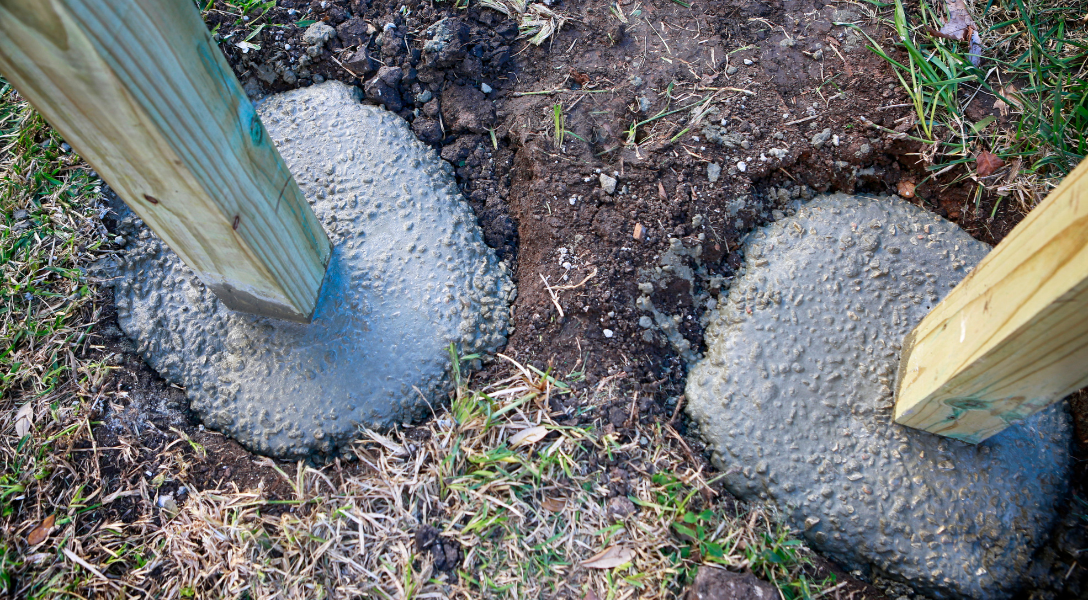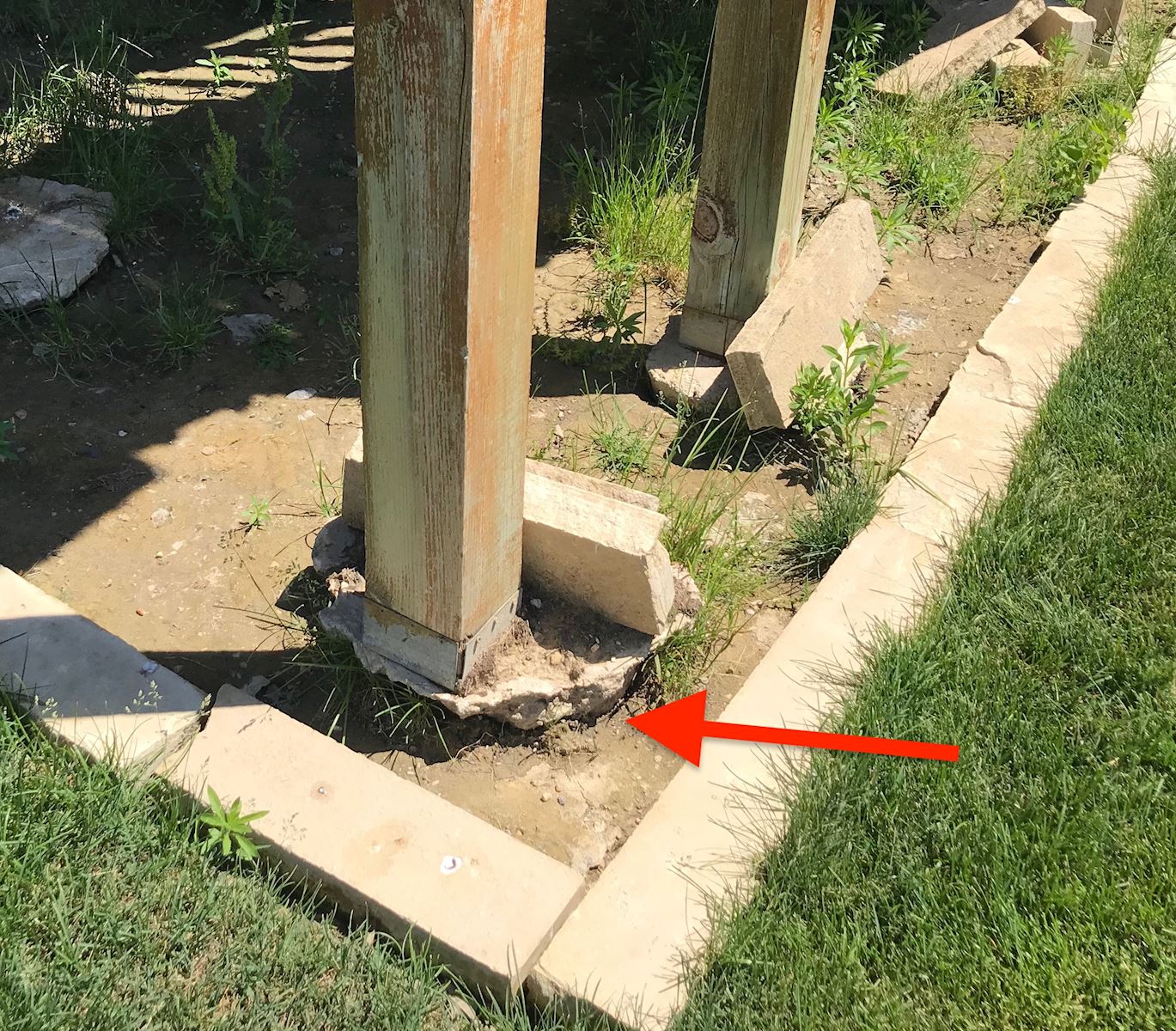Deck Footings Unveiled: An Extensive Take A Look At Structural Integrity
Boost Your Deck's Stability With Proper Deck Footing: Make Sure Durable Durability and Safety
One essential factor that often obtains ignored is the appropriate installation of deck grounds. These footings offer as the structure of your deck, offering the necessary assistance and security to endure the examination of time. In this conversation, we will discover the significance of proper deck ground, guide you via the step-by-step process of installment, and highlight the value of regular upkeep to protect your deck's security.
Why Appropriate Deck Footing Issues
Proper deck ground is essential for ensuring the stability and lasting toughness of any deck framework. The deck footing, or structure, acts as the support point for the entire deck, sustaining the weight of the structure and moving it to the ground below - Deck Footings. Without a strong ground, a deck can become unsteady, leading to architectural failing and potential security hazards

Furthermore, appropriate deck ground aids to protect against wetness damages. Dampness can seep into the ground and compromise the structure, leading to decaying or degeneration. By utilizing appropriate materials and methods for the ground, such as concrete piers or helical heaps, the deck can be raised above the ground, reducing contact with wetness and extending its life expectancy.
Comprehending the Influence of Soil Conditions
The security and sturdiness of a deck framework can be substantially affected by the dirt problems in which it is constructed. Comprehending the effect of dirt conditions is important for making sure the resilient toughness and safety and security of a deck. Various sorts of dirt have differing load-bearing capabilities, drain abilities, and expansion and contraction residential or commercial properties, which can all affect the stability of the deck.
One vital variable to think about is the soil's bearing capacity, which describes its capacity to support the weight of the deck and any additional lots. Soils with high bearing capacities, such as compressed crushed rock or clay, are optimal for supporting hefty frameworks like decks. On the other hand, dirts with low bearing capacities, such as loosened sand or soft clay, might need additional actions to improve stability, such as deep grounds or soil stablizing methods.

Additionally, the dirt's tendency to acquire and increase with modifications in dampness content can influence the stability of the deck. Dirts with high clay web content are susceptible to substantial expansion and tightening, which can cause changing and resolving of the deck structure. Correct measures, such as setting up dampness barriers or utilizing different foundation systems, may be called for to mitigate the impacts of dirt movement.
Selecting the Right Ground Products
What factors should be thought about when picking the appropriate footing materials for a deck? Picking the appropriate footing materials is necessary for ensuring the stability and durability of a deck. A number of variables need to be taken into consideration when making this choice.
Firstly, the kind of soil in the area plays a vital duty in determining the appropriate footing materials. Different soils have varying load-bearing capacities, so check my source it is essential to choose materials that can effectively sustain the weight of the deck and any kind of possible tons it might bear.
Secondly, the climate and climate condition of the region should be considered. In locations with rough winters or high degrees of dampness, footing products that are resistant to rust and decay, such as cured or concrete timber, are advised. These products are a lot more long lasting and less prone to damage from freezing temperature levels, dampness, and bugs.
Moreover, the size and elevation of the deck additionally affect the choice of footing materials. Larger and taller decks call for even more substantial grounds to make certain security and avoid shifting or sinking. In such situations, materials like helical piers or concrete grounds may be more ideal.
Finally, budget factors to consider must not be overlooked. While some products might offer superior resilience and efficiency, they might likewise feature a higher cost. When picking the suitable footing products for a deck., it is crucial to strike a balance between price and high quality.
Step-by-Step Overview to Setting Up Deck Footings
When mounting deck footings, it is very important to comply with a detailed guide to make sure stability and longevity. By following these actions, you can ensure that click resources your deck will certainly have the ability to endure the examination of time and supply a safe and satisfying exterior space for many years ahead.
The initial step in mounting deck grounds is to identify the place and format of your deck. This consists of measuring and marking the area where the grounds will certainly be positioned. It is necessary to make sure that the grounds are equally spaced and aligned with the deck's style.
Following, you will certainly require to dig the openings for the grounds. The depth and diameter of the holes will certainly rely on the dimension and weight of your deck. It is crucial to dig the holes deep enough to reach below the frost line to stop frost heave.
As soon as the openings are dug, you can start pouring the concrete footings. It is suggested to make use of a pre-mixed concrete mix for this action. Load the openings with concrete, ensuring that it is level and smooth. Use a message level to guarantee that the footings are plumb.
After the grounds have actually been put, permit the concrete to treat for a minimum of two days before waging the deck installation. This will ensure that the footings have actually set and prepare to sustain the weight of the deck.
Regular Upkeep to Protect Deck Stability
To keep the stability of your deck, routine upkeep is vital. By implementing a routine upkeep schedule, you can ensure that your deck stays secure, resilient, and aesthetically enticing.
Cleaning your deck consistently is one more important maintenance job. With time, dust, mold and mildew, and debris can build up on the surface area of the deck, bring about a slippery and unpleasant appearance. Utilizing a light detergent and a stiff brush or power washing machine, you can effectively eliminate these pollutants and bring back the deck's initial elegance. Additionally, on a regular basis applying a protective sealant can help avoid wetness damage and extend the life of your deck.
In addition to these regular upkeep jobs, it is also recommended to carry out a complete examination of the deck's architectural components a minimum of yearly. This includes checking the problem of the footings, blog posts, joists, and beam of lights. Any type of signs of degeneration or weakness must be addressed immediately to make sure the continued stability and safety of the deck.
Conclusion
In verdict, appropriate deck ground is important for ensuring the long-lasting longevity and safety of your deck. By following a detailed overview to setting up deck footings and regularly preserving them, you can boost your deck's security.
In this discussion, we will certainly explore the value of proper deck footing, guide you via the detailed process of installation, and highlight the relevance of regular upkeep to maintain your deck's stability.
Correct deck ground is vital for making certain the stability and long-lasting resilience of any kind of deck structure.One of the main reasons why appropriate deck ground issues is to protect against the deck from shifting or sinking over time (Deck Footings).In conclusion, correct deck footing is important for making sure the resilient longevity and safety and security of your deck. By check my site following a detailed overview to installing deck grounds and frequently preserving them, you can enhance your deck's security